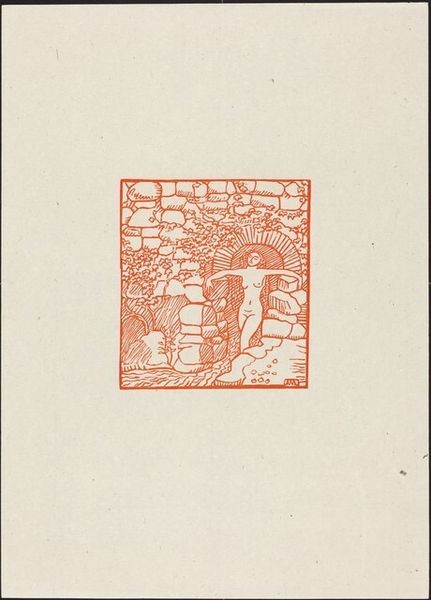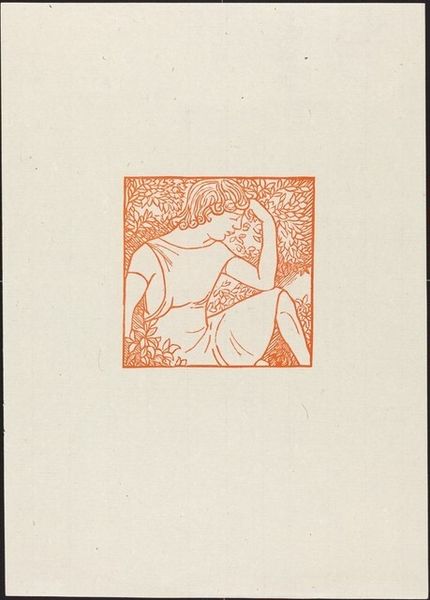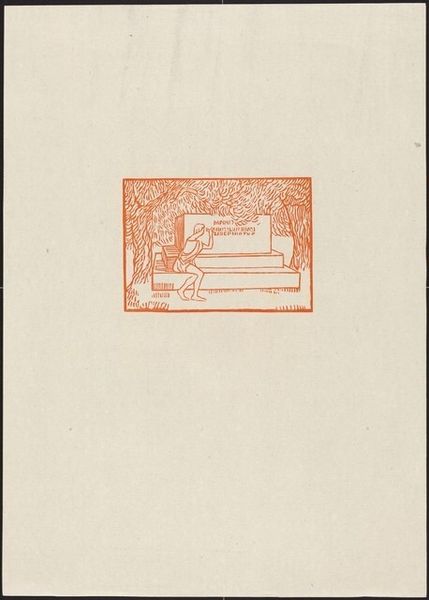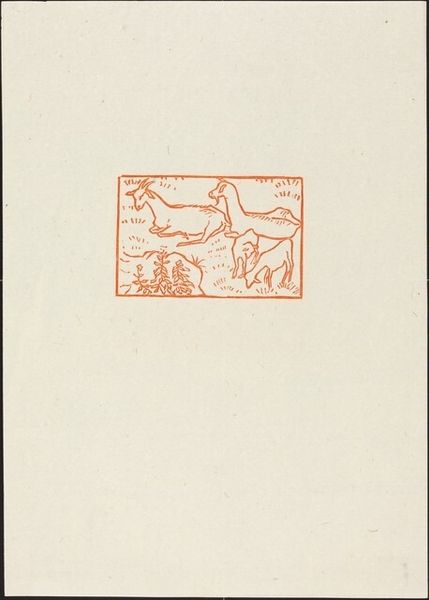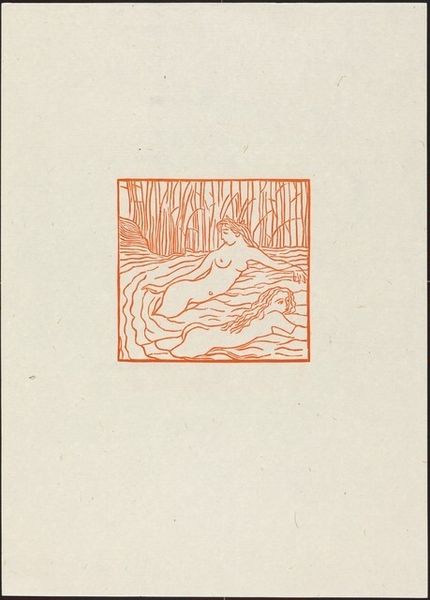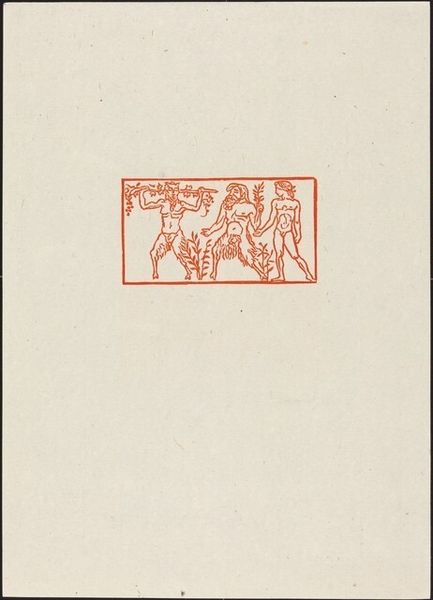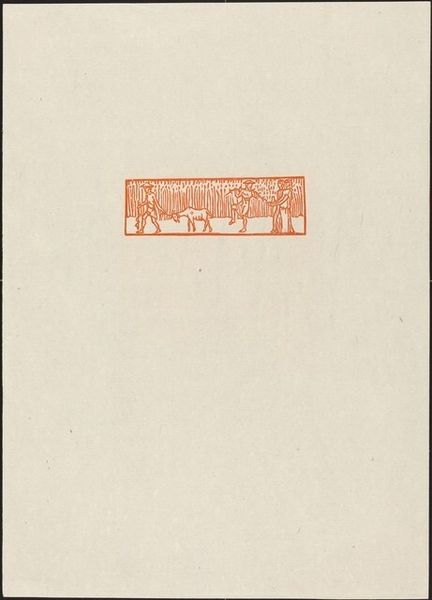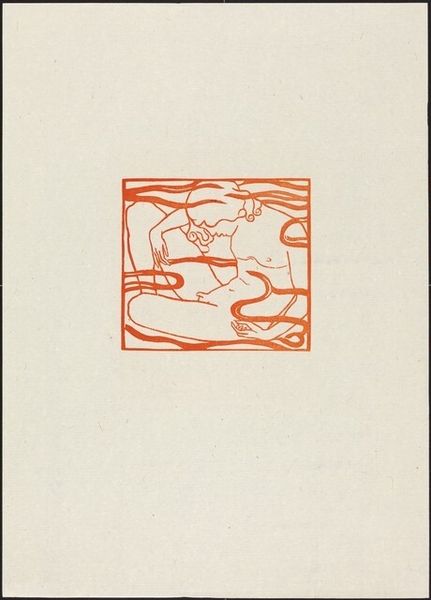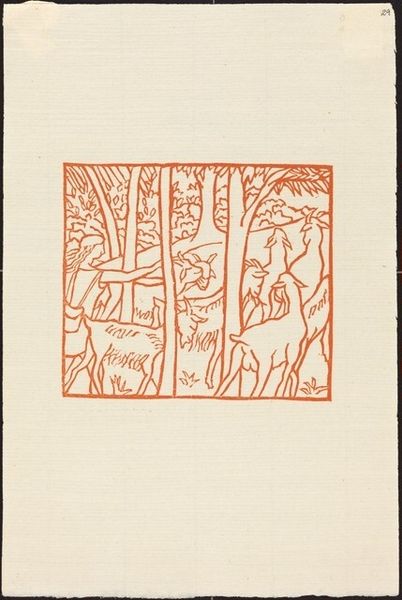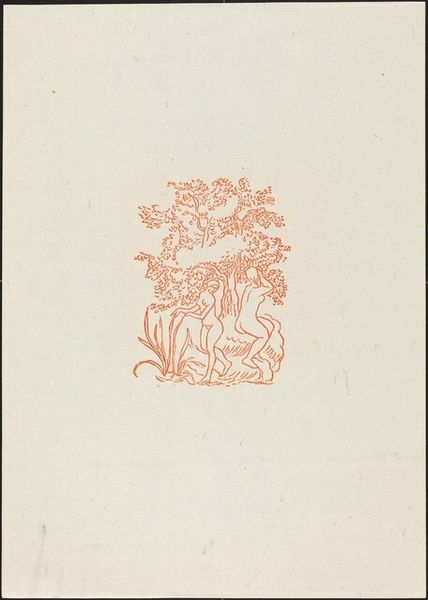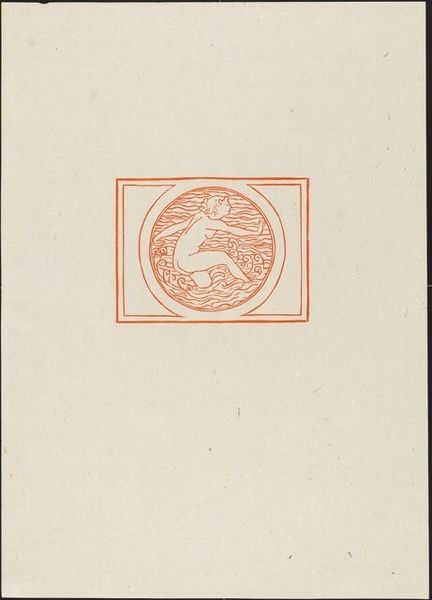
Fifth Eclogue: Mopsus' Kids at Pasture (En-tete) Possibly 1926
0:00
0:00
drawing, print, linocut
#
drawing
# print
#
linocut
#
landscape
#
linocut print
#
modernism
Copyright: National Gallery of Art: CC0 1.0
Curator: Looking at "Fifth Eclogue: Mopsus' Kids at Pasture," possibly from 1926, a linocut print by Aristide Maillol, one immediately notices the intimate, almost miniature, scale alongside a landscape bustling with meticulously rendered foliage. Editor: My initial impression is one of pastoral tranquility, although there’s a tension between the density of the trees and the stillness of the animals at rest. It feels intentionally compressed. Curator: It is. Maillol, known for his sculptures celebrating the female form, explored printmaking as well, channeling those sensibilities here in a very different medium. This work appeared as an “en-tête,” or a headpiece, to a poem. Editor: Right. I find myself pondering the potential commentary, however subtle, embedded within its historical context. During that time, what sociopolitical conversations was Maillol engaging in through a medium such as print? It's all about democratizing access, perhaps? Curator: Printmaking held a significant position within the cultural landscape; linocuts, specifically, facilitated accessible image reproduction and broader dissemination. Given Maillol's other more well-known focus on the idealized female figure, I feel there is some irony given that is set here against an entirely new medium: one focused more around egalitarianism. Editor: True. Thinking more broadly about how pastoral themes intersect with power, who traditionally gets to represent rural idylls? It is interesting that he departs from a hyper-fixation on bodies toward what appears to be some sense of land. Curator: Yes, it begs questions. His vision moves towards the simplification of form, yet we also get this incredible detail in the trees that suggests a closeness with the earth. Editor: It brings to mind a quiet resistance, an embracing of simplicity and the natural world during a time of rapid modernization and potentially unsettling changes in social order. I guess you could say it speaks to something more revolutionary beyond just the material limitations. Curator: I see that too, actually. It shows the potency and complexity achievable even in such compact size and unassuming artistic gestures. The act of creation—the material engagement—is as essential as the finished image itself. Editor: It definitely moves us beyond idyllic fantasy toward real tangible politics. This piece might be tiny, but Maillol’s questions still linger here about our relations to land, nature, and social positionality.
Comments
No comments
Be the first to comment and join the conversation on the ultimate creative platform.
